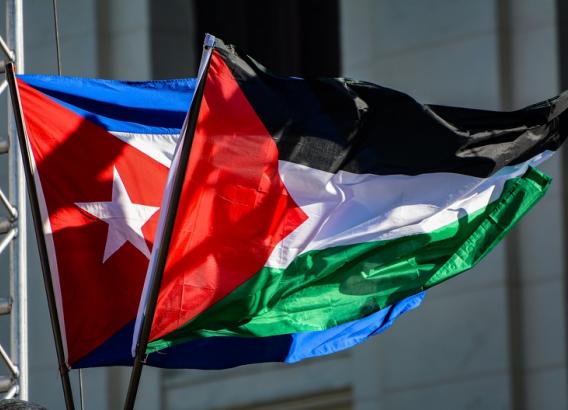Japan, Qatar and the history of guest teams at the Copa América

The 46th edition of the Copa América, the oldest tournament in international football, begins on Friday night when hosts Brazil take on Bolivia in São Paulo. Eagle-eyed observes may have noted that two countries have travelled a long way for this year’s tournament. Qatar and Japan, by coincidence the winners and runners-up in the Asian Cup held earlier this year, will both be in Brazil to compete for another piece of silverware.
Initial plans for the 2019 tournament involved six guest teams – to make a more mathematically pleasing field of 16 – but a lack of willing participants soon put paid to that idea. There was speculation about invites for Spain and Portugal but, given their involvement in the Nations League finals and Euro 2020 qualifiers, that was never a serious proposition. With the schedules of the Gold Cup and Africa Cup of Nations also clashing, Asia was the only place to go for guests. Bringing in six guest teams from Asia was never realistic, so the grandiose plans for expansion were shelved. Japan and Qatar would have to do.
The other continental tournaments do not bring in guest teams, but it is now the norm for the Copa América. There are only 10 members in Conmebol, the South American football federation, so they have welcomed two guests since the 1993 tournament onwards. The format improved but at a price: the tournament lost integrity and there was not the risk – as yet unfulfilled – that South America’s champions would come from another continent.
The guests are generally only expected to pad out the schedule, bring along their TV money and viewing figures, then make a swift exit before the real action begins in the later rounds. Most guests have followed that script but, on occasion, some have had a tilt at glory.
Mexico took part in 10 straight tournaments from 1993 until the Copa América Centenario in 2016. Not only are they the most obvious fit geographically, but they have generally been well equipped to face the giants of South America. That much was clear from the start. Even though they did not win any of their group games in their first Copa América in 1993, they somehow managed to scrape into the knockout rounds. After seeing off Peru in the quarter-finals and hosts Ecuador in the semi-finals, they lined up against Argentina in the final. With the pride of the whole continent on the line, Gabriel Batistuta came to rescue, scoring two goals in a 2-1 win for Argentina – still their most recent Copa América triumph.
Mexico were runners-up again in 2001 – losing to hosts Colombia in that final – and they have also finished third on three occasions. However, in recent years, a schedule clash between the Copa América and Gold Cup left Mexico attempting to compete on two fronts, with two separate squads. The Gold Cup has taken priority again this year and, for the first time since their initial invite in 1993, Mexico are skipping the Copa América completely.

USA also made their debut in 1993, taking the opportunity to test themselves in a competitive environment before they hosted the World Cup the following summer. They didn’t win a single game in 1993, but came back stronger two years later and reached the quarter-finals, where they faced their great rivals Mexico.
A tense, tetchy match ended goalless, with USA ultimately prevailing 4-1 on penalties. Football fans in Uruguay were clearly unimpressed by this Concacaf incursion into their event – a mere 6,500 spectators turned up for the quarter-final. USA were narrowly beaten by Brazil in the semi-finals and were then thumped 4-1 by Colombia in the third-place playoff – a game that featured a goal scored by Faustino Asprilla and set up by René Higuita.
USA have been invited to every subsequent tournament but clashes with the increasingly important MLS schedule meant the invitation wasn’t accepted again until 2007. A weak USA squad were beaten in all three of their group matches, exposing the uncomfortable truth about guest participants. These sides often see the tournament as a series of glorified friendlies, a chance to test out fringe players, or a way of gaining experience for World Cup qualifiers or their own confederation’s tournament. The USA haven’t played in a regular Copa América since 2007, although they did host the the Centenario edition in 2016 – an expanded tournament with several Concacaf countries.
A third Concacaf nation, Costa Rica, made the first of their guest appearances in 1997 to little acclaim, with Jamaica doing likewise in 2015. The horizons were expanded in a different direction in 1999 when Japan joined the party, becoming the first non-American team to participate. They finished last in their group in a tournament that suffered from weakened squads across the board – a fact highlighted by Uruguay sending a squad packed with youth players (who still made the final).

Canada were meant to make their Copa América debut in 2001 but security concerns in host country Colombia meant the tournament was cancelled a fortnight before the scheduled kick-off. The Canadians duly abandoned their training camp and sent players back to their clubs. Five days later the tournament was reinstated, but it was too late for Canada – their one opportunity to take part in the Copa América disappeared before the tournament had even begun. Honduras stepped in at the last minute and, despite their lack of preparation, made it to the semi-finals, knocking out Brazil along the way.
The Copa América is usually held at the start of a cycle for South American teams. Coming the summer after the World Cup, it is their first competitive action for a year – or even as long as 18 months for the less successful teams. The tournament is usually followed by the start of the World Cup qualifying marathon, so teams are often at the beginning of their development. This has led to weakened, experimental sides and the invited guests – many of whom are not up to the task or not at full strength themselves – has accentuated the drop in quality.
This year’s guests, Japan and Qatar, have some hope. They both reached the Asian Cup final in February and may be up against undercooked South American sides – their World Cup qualifiers do not begin until next March, ironically, because the next World Cup, in Qatar in 2022, is being held later in the calendar than usual. Although no one really expects either of the guests to challenge for the trophy.
What this all means for the Copa América and its grand history is open to debate. Some guests have made meaningful contributions, but most have only been there to ensure the preferred format works. They have also damaged the wider perception of the tournament. Having weaker, often distracted teams at the Copa cheapens a storied, historic tournament. Only an end to the era of guest participants – or a merger with Concacaf to create a Pan-American tournament – will give the Copa América the prestige it deserves.













Add new comment